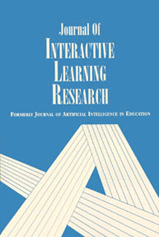Permutations of control: Cognitive considerations for agent-based learning environments
While there has been a significant amount of research on technical issues regarding the development of agent-based learning environments (e.g., see the special issue of Journal of Interactive Learning Research, (1999, v10(3/4)), there is less information regarding cognitive foundations for these environments. The management of control is a prime issue with agent-based computer environments given the relative independence and autonomy of the agent from other system components. This paper presents four dimensions of control that should be considered in designing agent-based learning environments, with the MIMIC (Multiple Intelligent Mentors Instructing Collaboratively) system as an example. The first dimension of control involves instantiating the instructional purpose of the environment on a constructivist (high learner control) to instructivist (high program/agent control) continuum. The second dimension entails managing feedback, and several issues need to be considered: type, timing, amount, explicitness, and learner control of agent feedback. Third, agent vs learner control is further defined through the desired relationship of the learner to agent(s) (e.g., agent as learning companion, agent as mentor, multiple pedagogical agents, agent as personal assistant, or agent as resource). Fourth, to be instructionally effective, the agent(s) must assert enough control so that the learner develops confidence in the agent(s) in terms of believability, competence, and trust. Overall, an array of possible permutations of system versus learner control must be carefully considered.

